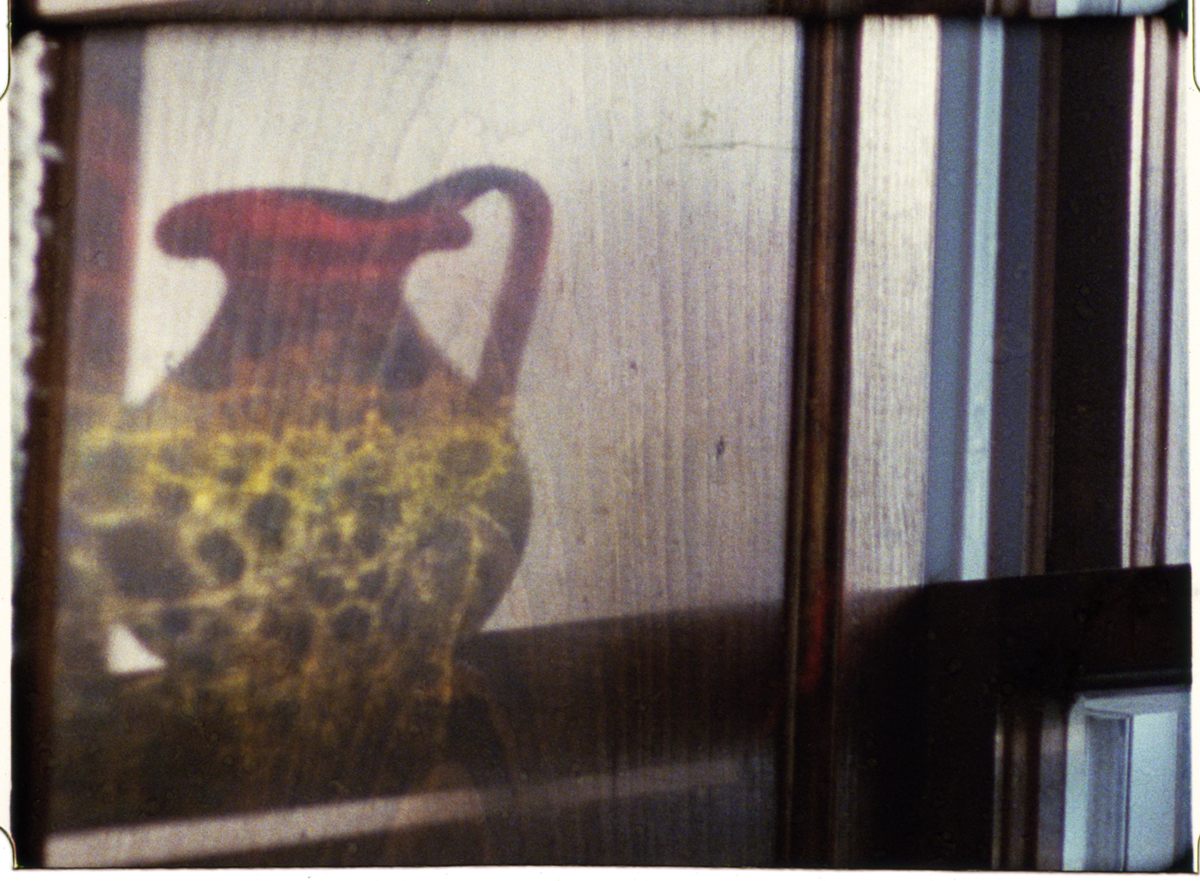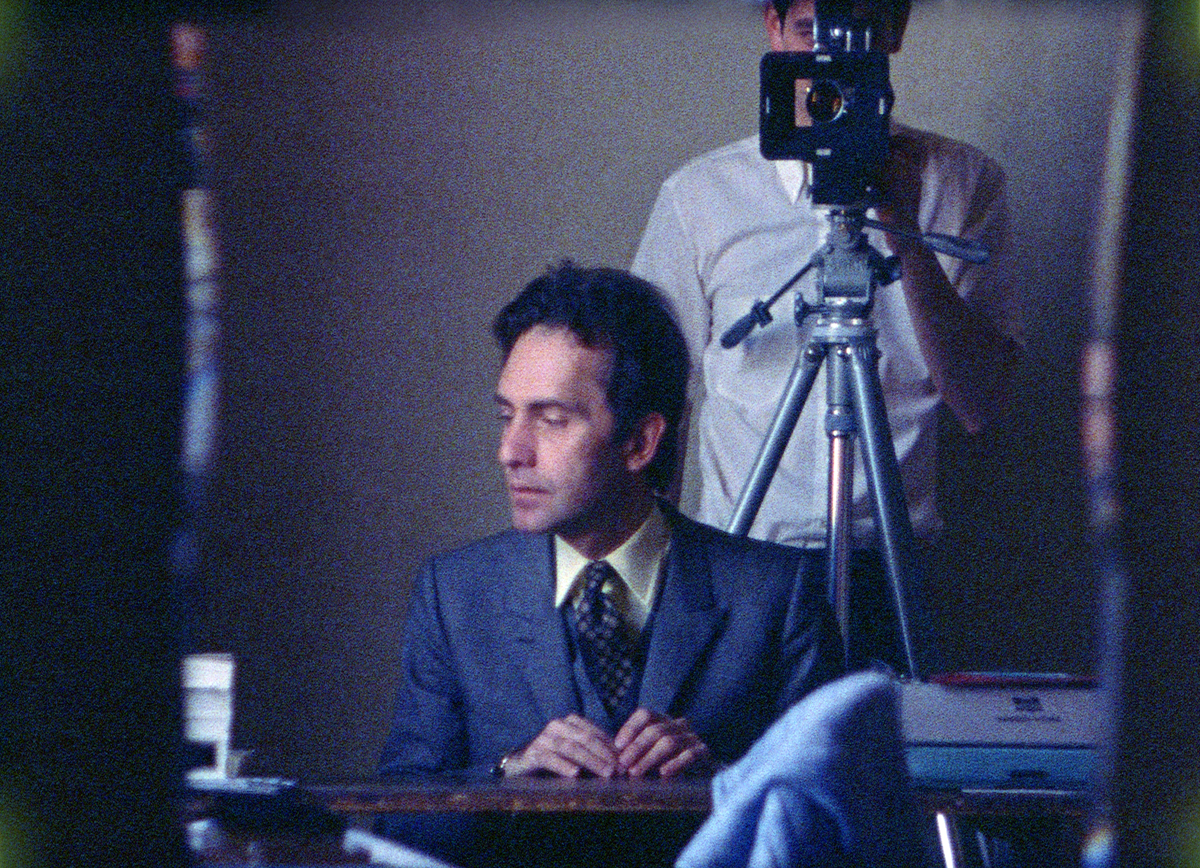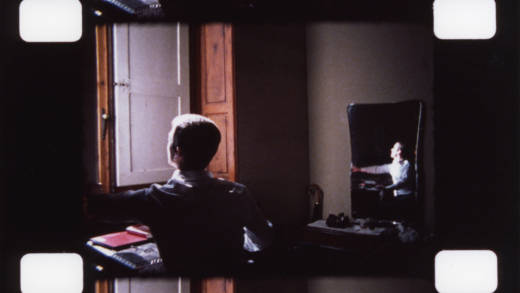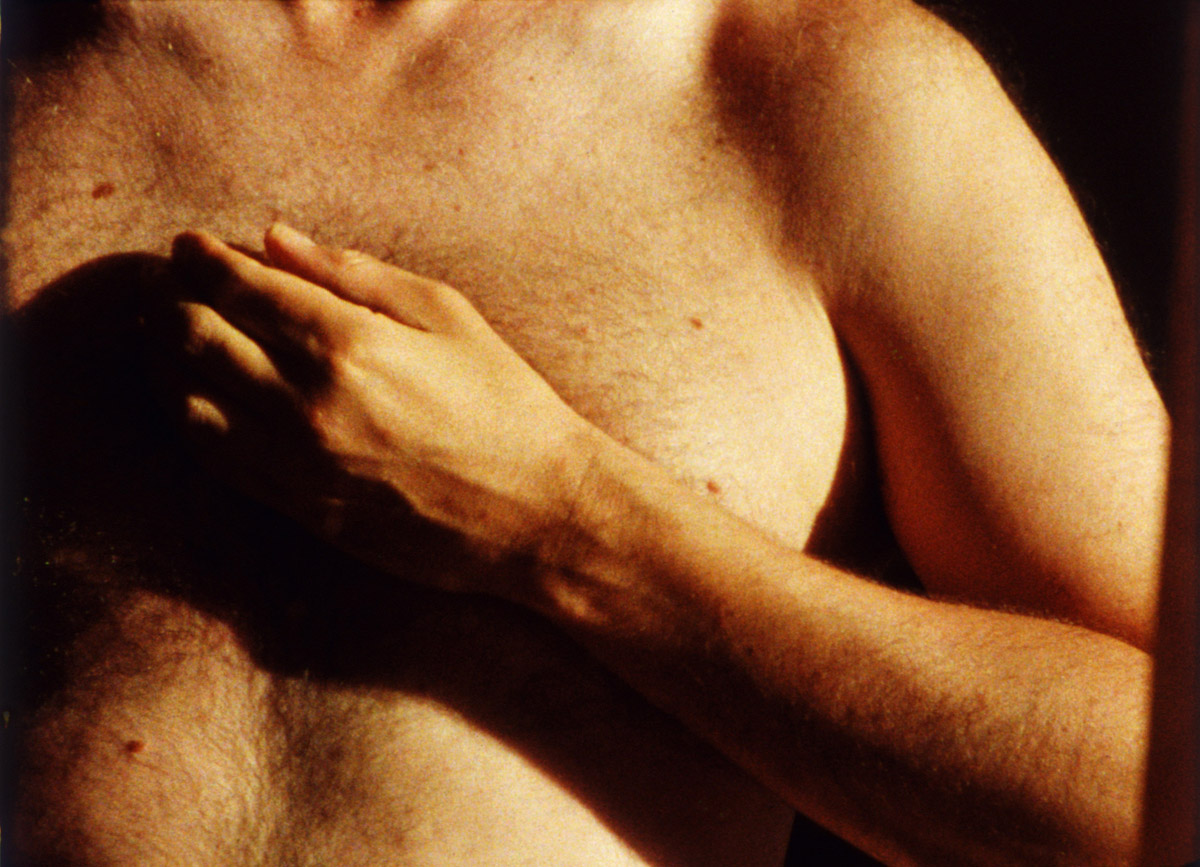As the poet remakes language each time she writes a poem, so Robert Beavers reconstitutes the basic elements of sound cinema for his intensely concentrated short films — many of which are screening this week as part of his residency at the Berkeley Art Museum and Pacific Film Archive (BAMPFA).
Take Pitcher of Colored Light (2007), a subdued yet exacting portrait of Beavers’ elderly mother that transforms her modest Cape Cod house into a wild glade of sensory detail. The film patterns itself after the seasons with radical economy — a few frames of an azalea bush here, the same petals dusting the ground there. The formal syntax sharpens our perceptions until we are processing half-heard sounds and flitting images with the quick, primary awareness typically reserved for emergencies. And yet for all its surface acuity, the film’s underlying energy — I want to say its sense of purpose — remains soft, dilated, adrift.

Gardening provides Pitcher of Colored Light with a characteristically tangible metaphor for the work of art, but the film also exemplifies Beavers’ lifelong preoccupation with architecture as form and form as architecture. The wood-shingled cottage is a long way from the duomos dotting his European films, but its psychological grandeur inheres to every frame. The resulting montage, like the equally wonderful Listening to the Space in My Room (2013), strikes me as a modern variation on the “memory palace,” the elaborate visualization technique used to store and recall information. The classical art of memory was supplanted by paper, printing, and, eventually, photography, but Beavers’ recent films suggest a continued role for such architectural figures in recovering the more fleeting intimations of being.
Pitcher of Colored Light is one of many films showing during Beavers’ residency, which comes seven years after he anchored in the Bay Area to show the whole of My Hand Outstretched to the Winged Distance and Sightless Measure. The present program promises a more varied but no less intensive encounter. In addition to reviving several of the cycle’s key entries, the series includes a program of recent works, an afternoon talk on film poetics, and several features and shorts selected by Beavers as being influential or otherwise kindred.

Reflecting on his 18-film cycle My Hand Outstretched to the Winged Distance and Sightless Measure, Robert Beavers wrote in 2011 that the decades-in-the-making series “can be understood in one way as autobiographical, as growing out of my relation to Gregory Markopoulos, protected by solitude and the spirit that came from our dedication to filmmaking.” The two men left New York for Europe in the late 1960s, when Markopoulos was a major figure of American avant-garde cinema and Beavers still a young man. The decision was obviously crucial to Beavers’ subsequent artistic development, but biography only takes us so far in accounting for true originality.




